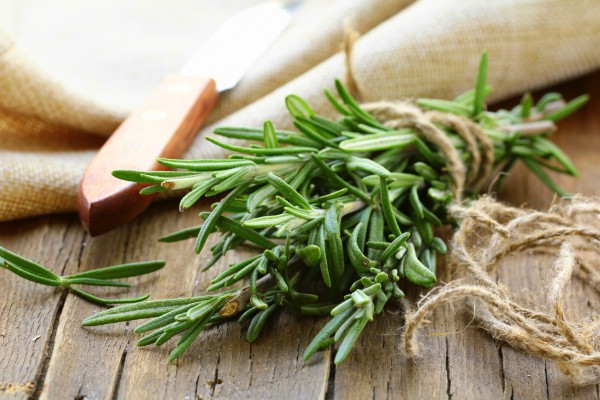How to Use Rosemary: Health Benefits, Culinary Tips, Oil & Growing Guide

Rosemary (Rosmarinus officinalis) is more than a fragrant kitchen herb — it’s a well-researched medicinal plant packed with antioxidants, anti-inflammatory compounds, and essential nutrients. Traditionally used to treat digestive issues, fatigue, and memory loss, rosemary continues to attract scientific interest for its positive effects on the immune system, brain function, and cardiovascular health. In cooking, it offers rich aroma and flavor while supporting digestion and nutrient absorption. Its essential oil is widely used in natural skin and hair care, as well as aromatherapy. The plant is easy to grow at home, making it a sustainable choice for both culinary and therapeutic purposes. This is noted by G.business, citing renewz.de.
Scientifically Proven Health Benefits of Rosemary
Rosemary contains powerful natural compounds such as rosmarinic acid, carnosol, flavonoids, and essential oils including cineole and camphor. These have been shown to reduce inflammation, combat free radicals, and protect brain cells from oxidative stress. Regular intake of rosemary — either as tea, spice, or extract — may improve memory, concentration, and digestion. It's also known to stimulate blood circulation, reduce muscle tension, and support liver function. Clinical studies have explored its role in reducing anxiety and mild depression through the modulation of cortisol levels. Rosemary is also mildly antibacterial and antiviral, supporting immune defense. When used consistently in moderate amounts, it becomes a functional part of a wellness-focused lifestyle.
Key nutrients and active compounds in rosemary (per 100g dried)
| Nutrient / Compound | Function & Benefit |
|---|---|
| Vitamin C (21 mg) | Immune support, collagen production |
| Beta-carotene (2,900 µg) | Skin health, vision, antioxidant |
| Iron (6.6 mg) | Oxygen transport, energy metabolism |
| Calcium (317 mg) | Bone density, nerve regulation |
| Magnesium (91 mg) | Muscle function, heart rhythm |
| Rosmarinic acid | Anti-inflammatory, anti-allergic |
| Carnosol | Antioxidant, anti-cancer potential |
How to Use Rosemary in the Kitchen
Rosemary is not only flavorful but functional in cooking. It supports digestion by stimulating bile production and easing the processing of fats. This makes it ideal for heavier dishes like lamb, roasted potatoes, and grilled vegetables. For the best flavor and nutrient retention, fresh rosemary should be added at the end of cooking, while dried rosemary works well in slow-cooked recipes. Rosemary is a natural flavor enhancer and a healthier alternative to salt. It also helps preserve food thanks to its antimicrobial properties. Culinary use of rosemary is safe for both adults and children when used in small quantities.

Culinary uses of rosemary
- Fresh sprigs in roasted vegetables or meat
- Dried rosemary in soups, stews, and casseroles
- Infused rosemary oil or butter for bread and dips
- Rosemary tea after meals for better digestion
- Added to homemade salad dressings and marinades
- Mixed with lemon and garlic for Mediterranean flavors
- Mild inclusion in child-friendly vegetable dishes
Is Rosemary Safe for Children
Rosemary is safe for children when used as a culinary herb in small amounts. It’s not recommended to use essential oils on young children (under 6 years), as concentrated oils may cause irritation or sensitivity. However, adding rosemary to food can offer mild digestive support and introduce herbal flavor early on. A mild rosemary tea (age 6+) may soothe bloating and improve focus. In external use, rosemary can be included in bath blends to calm hyperactivity or ease mild colds. Growing rosemary with children can also teach them about plants, food, and health. As always, moderation is key.
Ways to use rosemary safely with kids
- A pinch of dried rosemary in mashed veggies or soups
- Herb-infused olive oil spread on toast
- Homemade rosemary crackers or breadsticks
- Mild tea with honey (only for kids 6+)
- Add to a warm bath for natural relaxation
- Grow rosemary together on a sunny windowsill

How to Grow Rosemary at Home
Rosemary is a perennial shrub that thrives in warm, sunny environments with well-drained soil. It can be grown outdoors in a garden or indoors in pots or containers on a balcony or windowsill. The soil should be light, slightly alkaline, and sandy — avoid overwatering, as rosemary roots rot easily. Use containers with drainage holes and place the plant where it gets at least 6 hours of sun per day. Prune it regularly to encourage bushy growth and prevent woodiness. In cold climates, rosemary should be protected from frost or brought indoors for winter.
Home-growing tips
| Requirement | Recommendation |
|---|---|
| Light | Full sun, minimum 6 hours daily |
| Soil | Well-drained, sandy or loamy, pH 6.5–7.5 |
| Watering | Only when soil is dry; avoid soggy conditions |
| Container | At least 20 cm deep with good drainage |
| Pruning | Cut back 1/3 in spring to maintain shape |
| Winter care | Bring indoors or insulate in cold zones |
| Harvest | Best in the morning when oil concentration peaks |
One Plant, Many Benefits
Rosemary is a unique herb that supports physical and mental well-being, enhances culinary experiences, and brings sustainable value to your home. It combines antioxidant, anti-inflammatory, and antimicrobial effects with great taste and versatility. Whether used as a kitchen staple, herbal remedy, or home-grown health booster, rosemary fits perfectly into a modern, mindful lifestyle. Its ability to aid digestion, sharpen focus, and support immunity makes it one of the most underrated but valuable plants available today.
Stay connected for news that works — timely, factual, and free from opinion — and insights that matter now: Why Jack Daniel’s Is Betting on Blackberry Whiskey – and What It Means for the Market